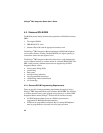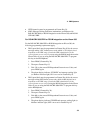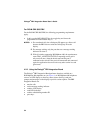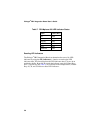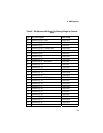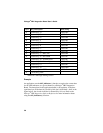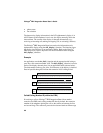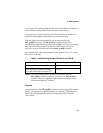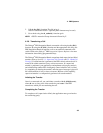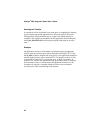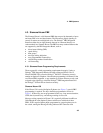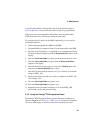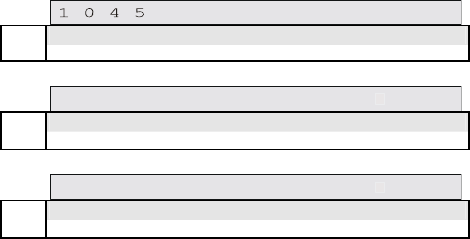
Dialogic
®
PBX Integration Board User’s Guide
• phone status
• line selection
The data used to display information in the LCD alphanumeric display is in
ASCII format. If the telephone is not in use, the display normally shows the
date and time. The content of the display is changed automatically (e.g.,
receiving an incoming call, making an outgoing call, or activating a feature).
The Dialogic
®
PBX Integration Board can retrieve the information on its
alphanumeric display using the d42_display( ) function. The function places
the display data (48 bytes) in an application buffer. Refer to the Dialogic
®
PBX Integration Software Reference for more information about using the
d42_display( ) function.
Example
An application uses the dx_dial( ) function and the appropriate dial string to
press keys dial extension number 1045. The d42_display( ) function is used to
retrieve the display data and place it in an application buffer (shown below).
The information for the top row (first 30 characters) of the display is checked.
Data in bytes 00 through 03 indicate that extension 1045 is being dialed.
data
01 00 04 05 4C 4C 20 20 20 20 20 20 20 20 20 20 20 20 20 20
byte 00 01 02 03 04 05 06 07 08 09 10 11 12 13 14 15 16 17 18 19
data
20 20 20 20 20 20 20 20 20 20 20 20 20 20 20 20 20 20 20 20
byte
20 21 22 23 24 25 26 27 28 29 30 31 32 33 34 35 36 37 38 39
data
20 20 20 20 20 20 20 20 20 20 20 20 20 20 20 20 20 20 20 20
byte
40 41 42 43 44 45 46 47 48 49 50 51 52 53 54 55 56 57 58 59
Called/Calling Number ID (within the PBX)
If receiving a call on a Dialogic
®
PBX Integration Board from another
extension, the PBX sends calling number ID data (by default, the extension
number of the telephone placing the call) to the station set between the first
and second rings. The station set processes the data and sends an ID message
60



